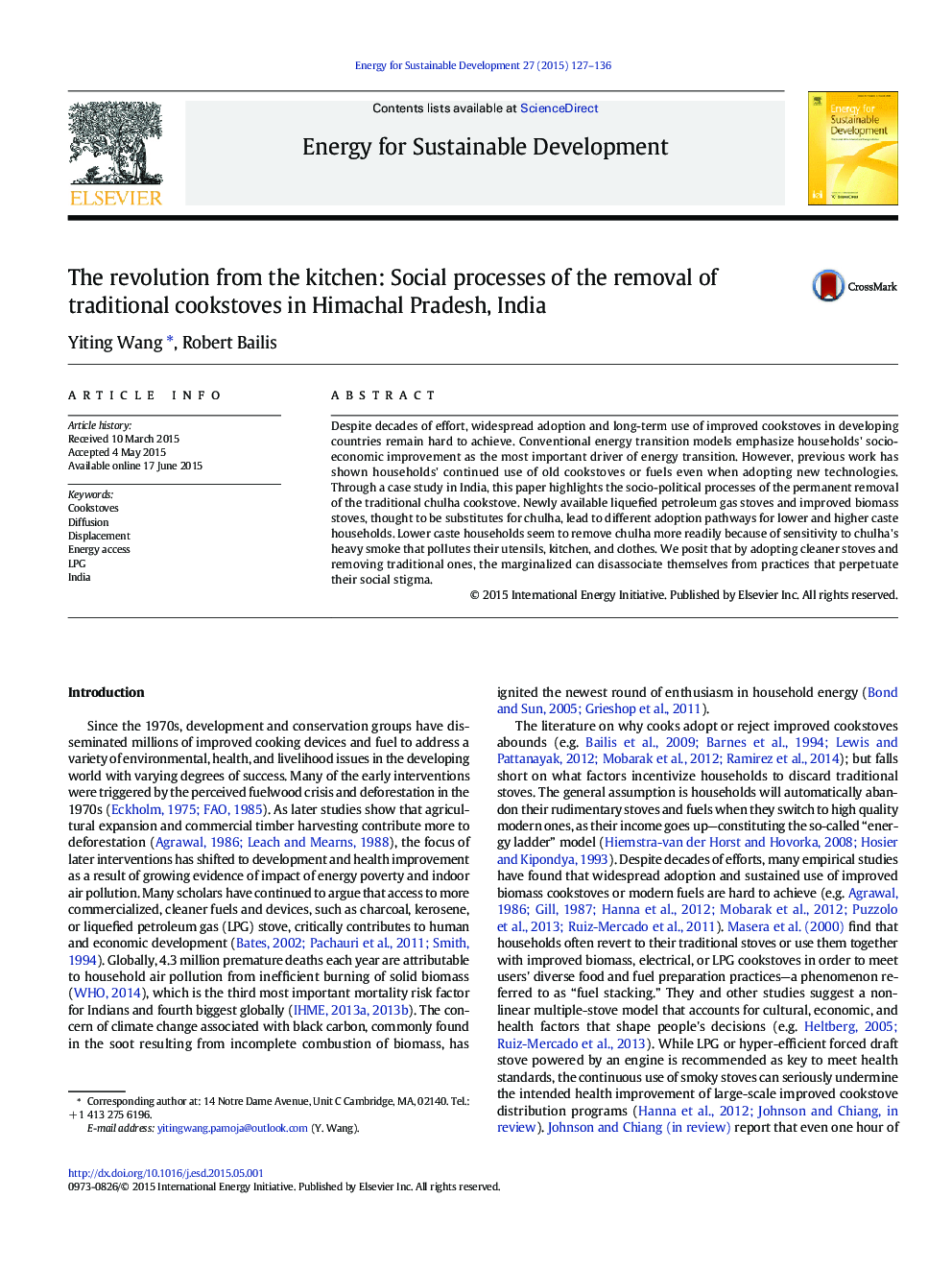| Article ID | Journal | Published Year | Pages | File Type |
|---|---|---|---|---|
| 1046879 | Energy for Sustainable Development | 2015 | 10 Pages |
•We examine social processes of cookstove adoption and displacement in Northern India.•By subsidizing and reducing logistical barriers, local NGO improved access to LPG.•Lower caste households remove traditional stoves more readily than higher castes.•We analyze triggers and drivers propelling changes in kitchen.•Desire for cleanliness and social identity shape stove choices.
Despite decades of effort, widespread adoption and long-term use of improved cookstoves in developing countries remain hard to achieve. Conventional energy transition models emphasize households' socio-economic improvement as the most important driver of energy transition. However, previous work has shown households' continued use of old cookstoves or fuels even when adopting new technologies. Through a case study in India, this paper highlights the socio-political processes of the permanent removal of the traditional chulha cookstove. Newly available liquefied petroleum gas stoves and improved biomass stoves, thought to be substitutes for chulha, lead to different adoption pathways for lower and higher caste households. Lower caste households seem to remove chulha more readily because of sensitivity to chulha's heavy smoke that pollutes their utensils, kitchen, and clothes. We posit that by adopting cleaner stoves and removing traditional ones, the marginalized can disassociate themselves from practices that perpetuate their social stigma.
